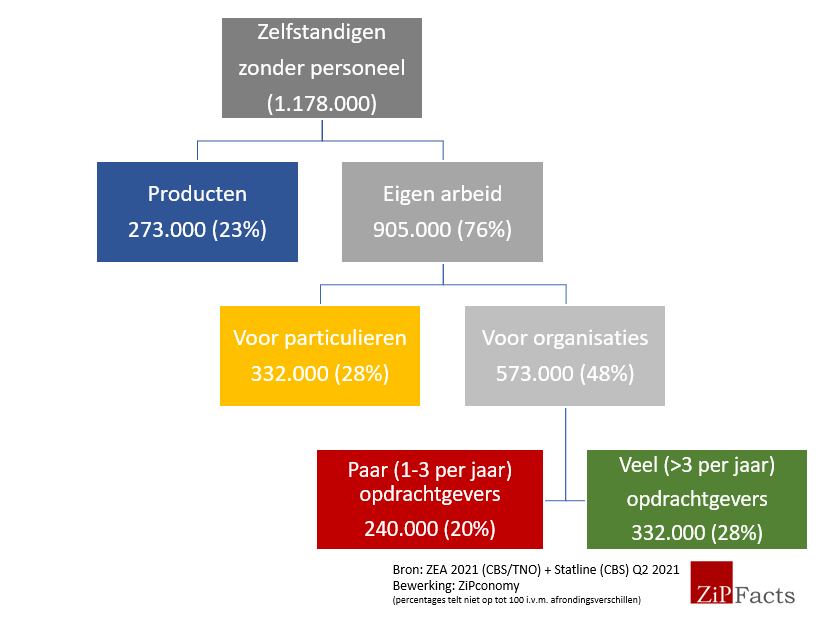Han Kolff in 'The Open Talent Report Podcast' of CXC

The HR podcast of CXC explores all things open talent, direct sourcing, compliance and labor laws with industry experts. In each episode Connor speaks with CEOs, founders and experts from staffing, technology and legal sectors around the world. This week we are joined by CEO of HR services provider, Head First Group. Han has a deep knowledge of the staffing industry having spent 15 years in the fast moving goods industry (Heineken and Danone) before moving to work for Randstad for over 8 years.
On the podcast Connor and Han tackle the pressing questions in today's labor landscape from global labor shortages and remote working to the digitization of recruitment and automation. They also take a look into the glass at what may be in store for the future of work.
Key Points
Labour shortage/ Labour market paradox
There is always a paradox, there is always balance between the supply and demand in the workforce and technology is simply giving us more data and greater view of the mismatch making it seem like a bigger paradox than ever. Now that pandemic is hopefully lifting we are seeing a shift from where the demand side had previously had the power to more of a balance with the supply having more of say. Companies should change their perspective when hiring. For example in the IT space, if you are looking for a Java developer companies should look at if they need somebody who already has that skill set or if they can look at training a person up as a Java developer.
Is hiring anyone anywhere an area of growth?
In theory we can work remotely and cut jobs down into gigs so it is more concrete and easier to delegate a certain piece of work to somebody anywhere in the world. The issue comes with cooperation within companies which will slow down the adoption with global companies being able to adapt faster. Companies must also look at labor laws in different countries where they are engaging talent to ensure compliance.
The digitization of recruitment
There's two types of companies now, which are merging into trying to solve for everything. There's companies that come from more enterprise worlds, usually, they're more touch than tech. They have a bit more people supporting the product, they're not just a tech platform. Then there's companies that are more on the platform side like Upwork, maybe that's more gig related more shorter term projects and more instant. Sometimes they are more, b2c but they miss the touch part, to really sell into large enterprise clients. So if we look at it from the client side, they don't want only tech, they want a solution that encompasses technology and a personal touch.
Automation
I think that there is a lot more to be concerned about in his world, a lot more about climate and about food and other trends, than automation threatening the labor market. On the contrary automation can be a big opportunity and these bigger trends might influence how we as humans need to act and resolve things. But as we said when we started out, this labor market is so incredibly complex, and will need work everywhere, for a long period. So, this future where there's no work, it's very, very far out.
What would you do with a magic wand?
I think if I had a magic wand, I would want to have governments have a mindset of a more forward looking approach. They shouldn't stick to the past of a unionized world and a job or a specific labor market condition that needs to stay forever. If I look at many governments and many labor markets, a lot of them are trying to contain the power and the contract of the past, instead of creating a contract of the future that is less frictionless and actually gets more people to an income or a job. So it's all dependent on who has the power and then trying to protect what you have, instead I would appreciate if governments have a growth mindset.
About CXC
CXC enables companies to achieve a competitive advantage through managing contingent workforce quality, efficiency and risk, while reducing costs.
The Open Talent Report Podcast with Han Kolff
Group of 'independent professionals with a few clients' grows fastest of all self-employed workers

Self-employed workers are more likely to have long-term assignments with a few clients. Over the past four years, the percentage of self-employed individuals selling their own labor to fewer than three business clients increased by 5 percentage points.
Of all the types of self-employed workers, independent professionals with a few clients are the smallest group. But over the past four years, their percentage has increased significantly. Currently, 20.4% of all self-employed professionals sell services to fewer than three business clients per year. This is a lot higher than in 2019 (16.7%) and 2017 (15.4%). This is according to the report 'The self-employed do exist. Facts about the self-employed without staff' by ZiPconomy commissioned by HeadFirst and ONL for Entrepreneurs. ZiPconomy discovered this trend after analyzing figures from the Self-Employed Labor Survey (ZEA).
Four groups
Policymakers quite often overlook the heterogeneity among the self-employed, for example when replacing the DBA law or scaling back the self-employed deduction. By no means all self-employed people potentially compete with employees in the labor market. One way to clarify this heterogeneity is to divide the group of self-employed persons without personnel into four groups:
- Self-employed people selling products
- Self-employed individuals providing their own labor (services) to individuals
- Self-employed persons own labor, providing services to more than three companies or organizations per year.
- Independent contractors own labor, providing services to three or fewer companies or organizations per year. So they often do somewhat longer assignments with a client.

Shifts
For years there have been more self-employed people selling their own labor than self-employed people trading products. The ZEAs in the period 2012-2021 show that the difference is only increasing: in recent years, the percentage of "self-employed own labor" increased relative to the percentage of "self-employed products. In 2012, 29.5% of all self-employed people were still selling products; by 2021, that share will have dropped to 23.2%.

Business, private or both?
Thus, more than three-quarters of the total group of self-employed people sell their own labor. In 2021, about 53% of them worked exclusively for organizations (b-to-b); that percentage has remained almost the same since 2012. These are all kinds of entrepreneurs: day presidents, interim managers, freelance editors at a newspaper, zzp nurses at the hospital, contractors. In 2012, 29.5% of the self-employed worked own labor exclusively for individuals. In 2021, it will be 30.9%. Examples include handymen, cleaners or horseback riding instructors. In 2012, the remaining 18.1% worked for business clients as often as for private individuals. That percentage will drop slightly to 15.9% by 2021. An example is yoga teachers who teach both individuals and conduct business workshops.
Many or few clients
There are two types of self-employed people who work for companies and organizations: those with many different clients and those with a few clients per year. The group with many clients per year often works briefly for one client. Think of accountants, coaches, day chairmen and logo designers. It is usually also clear among these self-employed people that they do not have an employer-employee relationship with their client. The percentage of self-employed persons with more than three clients decreased: 28.2% of all self-employed persons fall into this category in 2021.
Smallest group grows the fastest
The self-employed category with a limited number of clients per year is the smallest group in percentage terms. At the same time, it is the group that is currently growing the fastest. From 2017 to 2021, their share in the total number of self-employed workers increased by 5 percentage points to 20.4%. These independent entrepreneurs often have longer-term assignments for many hours per week. Examples include interim managers, freelance editors of a TV show and carpenters working full-time on a large project for a contractor. Independent contractors with such long-term assignments are also called "independent interim professionals. Our analysis shows that this smallest group has grown the fastest over the past four years.
Statement
One possible explanation for the increase is the corona crisis: longer assignments for more hours per week give more security. Research by HR service provider HeadFirst Group and labor market data specialist Intelligence Group (2021) shows that during the crisis a shift was visible from staffing to hiring self-employed workers. In addition, the number of self-employed workers grew above average within certain occupational groups as additional demand arose during the corona crisis.
Curious about more facts and figures about the self-employed? Download the report 'The zzp'er does exist. Facts about the self-employed without staff' by ZiPconomy commissioned by HeadFirst and ONL for Entrepreneurs.
Appeal to all available talent: don't exclude zp'ers

The failure to tailor laws and regulations hinders the labor market. For example, the DBA law is still causing anti-zzp policies among various clients. This is problematic for the self-employed, but in view of the extreme scarcity in the labor market certainly also for clients. According to Han Kolff, CEO of HeadFirst Group, this requires decisiveness from politicians in The Hague and from clients.
Market maximally oversupplied
It is becoming increasingly complicated for organizations to find talent. Record after record is being broken of the number of open vacancies, and since the CBS measured the tension in the labor market, the number of vacancies has never before exceeded the number of unemployed. The limits of the flexible labor market have also almost been reached. HeadFirst Group and Intelligence Group showed in the recently released Talent Monitor that the (active) supply of independent professionals (zp'ers) is drying up and the benches at secondment agencies are emptying.
'Anti-zzp policy' still in play
In a time of extreme scarcity, all available talent is needed to keep the economy running. Despite this, various clients still too often exclude an important target group with valuable knowledge: independent professionals. This is the result of the DBA law and the "assessment of the relationship of authority" directive, which still causes nerves.
Since it is not always clear whether there is a relationship of authority between client and contractor - and the Tax Office only assesses afterwards - there is a fear among clients of possible retrospective levies. The Cabinet's earlier decision to suspend enforcement on this as of October 1, 2021, until more is clear about replacement legislation, is a wise choice. It was expected that this would create calm among principals. Unfortunately, little has changed among most clients when it comes to looking at self-employed workers in hiring applications or tenders, as we saw recently at the Municipality of The Hague.
The self-employed are hindered by this, although this is currently disguised by the fact that there is sufficient work for clients who are open to self-employed workers. It is most problematic for clients, who in the war for talent need every target group on the labor market, and certainly the knowledge-intensive group of hundreds of thousands of self-employed in the Netherlands.
Appeal to clients and politicians in The Hague
That principals are looking critically at hiring zp'ers for roles where perhaps someone in permanent employment would make more sense is good. But let go of the widespread fear of hiring self-employed workers. Within the frameworks of the DBA Act, more is possible than is currently happening at various clients. With a clear assignment description with defined results, good guidance for hiring managers on how to avoid a relationship of authority and a critical look at extremely long assignment periods, the expertise that self-employed people have can be used.
In addition, a call to a next cabinet, in line with earlier noises from professors, industry associations and self-employed organizations: get to work quickly on serious labor market reforms. Hold existing rules up to the light and engage in discussions with a broad representation of stakeholders. The pilot of the web module has shown that in certain sectors - such as transport, construction and hospitality - the risk of abuse with zzp constructions is highest. Vulnerable self-employed workers in these sectors deserve protection and benefit from effective enforcement. The €35 guideline in the SER opinion provides guidance for this. Only that removes the tension of the term "authority relationship" at the upper end of the market. That need has only increased with the current scarce labor market.
Wrong data and interpretations color debate on future of self-employment

The political debate about the future of the self-employed in the labor market is conducted on the basis of wrong data and misinterpretations. This is evident from a publication by independent knowledge platform ZiPconomy, which was commissioned by HeadFirst Group and ONL voor Ondernemers to map the heterogeneity and diversity of the self-employed population in the Netherlands. "Facts and figures are indispensable to make the right policy choices. In this report we bring together all relevant data on the self-employed, with the aim of taking the labor market debate to a higher level," explains Han Kolff, CEO at HeadFirst Group.
Most self-employed work in business services
Research by I&O Research, commissioned by the trade union FNV, shows that some 80 percent of the Dutch think that self-employed people work mainly in construction. A misunderstanding, because in reality the business services sector is the largest. More than a quarter of all self-employed workers work in that sector; only 15 percent work in construction. In addition, the education sector is the biggest riser between 2007 and 2019, at 186 percent. This does not mean that so many more teachers are self-employed in front of elementary school classrooms, the thought that is prevalent in political The Hague. In fact, almost half of the self-employed in education provided corporate training or tutoring in 2019. Their number tripled. On the contrary, the number of self-employed people teaching in regular education decreased.
Number of conscious, highly educated self-employed workers growing
Furthermore, figures from the Central Bureau of Statistics (CBS) show that self-employed people in 2021 are, on average, more highly educated than in previous years. The number of highly educated self-employed workers has more than doubled, while the share of practically educated self-employed workers, on the other hand, declined sharply. In six years, this percentage dropped from 19 percent to 15 percent. Kolff says: "The figures show that a growing group of employed people in their search for autonomy and challenge are taking the step to self-employment. Only just under 7 percent of the self-employed population call themselves forced self-employed. It is high time for a solution that supports needy self-employed people, but leaves the larger group of conscious self-employed people free to undertake."
Do care for the vulnerable self-employed
The report further shows that the distribution of wealth among the self-employed is greater than among employees, for example in terms of annual income and financial buffer. Self-employed people are overrepresented in both the lower income brackets (less than €20,000 per year) and the higher income brackets (more than €50,000 per year). Kolff argues that a helping hand from politics is needed for the self-employed with lower hourly rates and small financial buffers. "This group benefits from protection, for example against the consequences of disability and unemployment. However, this should go hand in hand with collectivity, social security and modern solidarity. A basic social system is needed for all working people, regardless of their contract or legal form, with securities that move with the changes in their working lives. A substantial change from the current system, but much needed to make the labor market future-proof," Kolff said.
Some of the results of the research are compiled in an infographic. The entire report 'The self-employed do exist. Facts about the self-employed without personnel' is free to download at hfgroup.headfirst.group.
About HeadFirst Group
HeadFirst Group is a leading, international HR service provider and the largest temporary employment platform for professionals in the Netherlands. The organization offers a diversity of HR solutions: Managed Service Providing, Recruitment Process Outsourcing, intermediary services (matchmaking, contracting) and HR consultancy. An average of fifteen thousand professionals work daily for over four hundred clients in Europe, with which HeadFirst Group realizes an annual turnover of over 1.5 billion euros. The main brands of HeadFirst Group are the intermediaries HeadFirst, Between and Myler, MSP service provider Staffing Management Services and RPO and recruitment specialist Sterksen.
Facts and figures self-employed indispensable for making the right policy choices

The European Commission wants the Netherlands to further cut tax credits for self-employed workers. It would be one of the two conditions to claim coronasteun from Brussels, mentioned the FD. This once again makes zzp'ers the subject of the political-social discussion about the labor market.
Politicians in The Hague see creating a more level playing field, including by phasing out the self-employed deduction, as one of the solutions to the proliferation of self-employed workers. We embrace the creation of a more level playing field. After all, every individual in the Netherlands - regardless of the form of work and employment relationship - is entitled to protection and security.
However, a helping hand from politicians is desperately needed for the self-employed with lower hourly rates and small financial buffers. This group benefits from protection, for example against the consequences of disability and unemployment. Nevertheless, due to the fixed amount of the self-employment deduction, self-employed people with lower incomes are hit harder.
Only 7 percent self-employed call themselves forced self-employed
A growing group of employed people - in their search for autonomy and challenge - are making the move to self-employment. Only just under 7 percent of the self-employed population call themselves forced self-employed. It is high time for a solution that supports needy self-employed people, but leaves the larger group of conscious self-employed people free to do business.
However, this must go hand in hand with collectivity, social security and modern solidarity. A basic social system is needed for all workers, regardless of their contract or legal form, with securities that move with the changes in their working lives. A substantial change from the current system, but much needed to future-proof the labor market.
To take the debate on the labor market to a higher level, facts and figures of self-employed people are needed. On Monday, November 8, ZiPconomy, ONL and HeadFirst Group will present a report with the aim: to map the diversity and heterogeneity of this group and contribute to a rational and factual debate.
Hyperscarcity in flex market for first time in history

For a time, organizations were able to afford the luxury of filling the shortage of permanent employees with temporary, external professionals. Those days are over: even in the flexible labor market there is scarcity on all fronts. This is evident from research by HR service provider HeadFirst Group and labor market data specialist Intelligence Group. "In order to recruit, bind and retain talent in these times, it is necessary for clients to pull out all the stops. The answer lies in improving employer branding, using data-driven recruitment methods, approaching alternative target groups and creating an attractive hybrid working environment," says Han Kolff, CEO HeadFirst Group.
Supply of flexible labor market dries up
The number of offers on assignments for highly skilled work has plummeted: it is now five times lower than five quarters ago. Secondment agencies have sold out and are trying to supplement their supply by recruiting new staff, but are running into the wall. In addition, the sourcing pressure on highly skilled freelancers has reached a new record: nearly 7 out of 10 are approached for an assignment at least once a quarter. Kolff says: "This hyper scarcity in the flex market is new in the Netherlands. It requires creativity and forces organizations to look at the entire labor population in an integral way. The form of contract is less relevant; bringing in the right talent is paramount."
No wage wave for permanent, but higher rates for flex
The scarcity in the flexible labor market shows itself, among other things, in rising hourly rates. The (offered) rates of professionals - self-employed and seconded - in various job groups are rising between 3.5 and 7 percent on average. In the third quarter of 2021, it is even going to accelerate. Remarkable given that the wage wave among permanent staff has not yet materialized. The September figures from the AWVN show an average wage increase of 2.4 percent. More than the annual average of 1.9%, but lower than the September inflation rate of 2.7%.
Geert-Jan Waasdorp, director and founder Intelligence Group: "For an accurate picture, we present - together with HeadFirst Group - at the end of the year the rate forecast for external professionals in 2022. With in-depth information at ISCO-3 level for around 130 job areas, the top 10 risers & fallers and of course various other notable items."
The Talent Monitor "Hyper Scarcity in the Labor Market" is available for free download at hfgroup.headfirst.group.
About Intelligence Group
Intelligence Group is an International Data & Tech company in the field of labor market and recruitment data. Intelligence Group focuses on the collection, storage and enrichment of labor market related data for the purpose of improving the recruitment of personnel (or employees) by employers and the employability/labor market opportunities of employees. This data is made available to clients in a wide variety, via reports, dashboards and APIs.
About HeadFirst Group
HeadFirst Group is a leading, international HR service provider and the largest temporary employment platform for professionals in the Netherlands. The organization offers a diversity of HR solutions: Managed Service Providing, Recruitment Process Outsourcing, intermediary services (matchmaking, contracting) and HR consultancy. An average of fifteen thousand professionals work daily for over four hundred clients in Europe, with which HeadFirst Group realizes an annual turnover of over 1.5 billion euros. The main brands of HeadFirst Group are the intermediaries HeadFirst, Between and Myler, MSP service provider Staffing Management Services and RPO and recruitment specialist Sterksen.
Politics trust zzp'ers gone, recognition needed

Highly educated zpp'ers give the trust relationship with national politics, on a scale of one to ten, a 4.6. This is evident from research by HR service provider HeadFirst Group, in which over two hundred independent professionals (zp'ers) participated. Underlying the low score are reasons such as doubts about expertise and the feeling of not being appreciated and poorly represented. Han Kolff, CEO at HeadFirst Group, takes the responsibility to contribute to the restoration of this trust: "Give self-employed people an independent place in the SER and start an accessible conversation with all types of self-employed people in the Netherlands. We like to play the connecting role to bring both worlds closer together."
Political trust historically low
Earlier research by the Social and Cultural Planning Office showed that confidence in politics fell sharply in the first six months of 2021. The stalled formation, the handling of the corona policy and the political aftermath of the allowance affair were at the root of this. These are also reasons often mentioned among self-employed people.
What plays a much bigger role for self-employed people, however, is the feeling that there is insufficient representation in the decision-making process. They experience that the traditional polder parties, such as trade unions and employers' organizations, are mainly listened to. In addition, self-employed people are annoyed by the fact that all types of self-employed people are lumped together and that politicians in The Hague have the wrong image of self-employed people: 'calculating self-employed people with tax advantages' instead of 'hard-working, passionate self-employed people who consciously choose entrepreneurship'. Finally, self-employed people doubt politicians' dossier knowledge and their ability to solve labor market issues. The lack of clarity and impracticability of laws and regulations for the self-employed, the DBA law in particular, was often mentioned as an example.
Building trust
Although the relationship of trust is under pressure, Kolff sees prospects for restoring it. An important point, which is in line with the "Outline Document" of the VVD and D66, is the representation and independent position of zzp'ers in the Social and Economic Council. "This gives zp'ers a central place in the decision-making process, so that interests can be better heard," Kolff explained.
In addition, he believes it is desirable to bring self-employed people in direct contact with MPs to share and discuss their concerns, entrepreneurial choices and practical bottlenecks. This knowledge exchange will have a positive effect on the information position and knowledge level of politicians. "Our core task as a labor market platform and service provider is to connect. We also like to fulfill this task between self-employed people and politicians, so that we can have a constructive debate together about the future of the Dutch labor market and the role of self-employed people therein," Kolff said.
About HeadFirst Group
HeadFirst Group is a leading, international HR service provider and specialist in the professional organization of permanent and flexible labor. The organization offers a diversity of HR solutions: Managed Service Providing, Recruitment Process Outsourcing, intermediary services (matchmaking, contracting) and HR consultancy. An average of fifteen thousand professionals work daily for over four hundred clients in Europe, with which HeadFirst Group realizes an annual turnover of over 1.5 billion euros. The main brands of HeadFirst Group are the intermediaries HeadFirst, Between and Myler, MSP service provider Staffing Management Services and RPO and recruitment specialist Sterksen.
Note to editors
Read the entire report 'The political trust of the independent professional by the yardstick'here.
Do you have any questions or comments in response to this press release? Feel free to contact Bart van der Geest, manager of marketing & communications at HeadFirst Group, reachable at 023 - 568 56 30 or bart.vandergeest@headfirst.nl.
New HeadFirst Group headquarters in Hoofddorp

HeadFirst Group makes the move to a new headquarters in Hoofddorp. This way we offer (new) colleagues and relations a special and optimal location to work and meet. The colorful building on Park 20|20 will be furnished to the latest standards for hybrid working and features a unique experience center for events.
According to Han Kolff, CEO HeadFirst Group, the former ANWB building at Taurusavenue 18 in Hoofddorp is a wonderful starting point to further realize the organization's ambitions as a team. "After great memories and tremendous growth at our current locations, we are moving to new premises. At this central, easily accessible location, we will build further to become Europe's largest labor market platform and provider of talent solutions in the professional segment."
New standard: hybrid working
Since 2020, we all think differently about hybrid working. For knowledge sharing, (team) meetings, induction of new colleagues, team work and personal meetings with colleagues and relations, we prefer to go to the office. For activities that require individual work and concentration, we prefer to work from home. The new location will provide excellent facilities for both, for example by equipping meeting rooms with the latest technology for remote meetings.
Kolff: "In designing the interior, we put our core values of 'Customer first,' 'Learn every day,' and 'Connecting people' at the center. We find it important to offer everyone an inspiring workplace, where connection is central. At the same time, we want to facilitate colleagues in an optimal work-life balance, with flexibility and autonomy. HeadFirst Group is no longer going back to a 5-day work week at the office." Additional benefits include facilities such as responsible food, excellent coffee and the opportunity to exercise. This makes the location a formidable competitor for the home office, according to Kolff.
Energy neutral
The building is completely energy-neutral, which fits perfectly with how HeadFirst Group wants to contribute to a better world of tomorrow. The location ensures that optimum use can be made of the power of the sun. There is enough daylight at any time of day, which is stimulating for HeadFirst Group employees. In addition, the location acts as a sustainable business card that introduces business relations to HeadFirst Group and its services in a special way.
Experience center
The building has a real eye catcher: the large, round theater. The high-tech interior with its semicircular projection screen is one of the largest in the world. "Besides being used by HeadFirst Group employees, it will be used in particular to receive external relations, such as freelancers, partners and clients. With possibility to work, meet and organize events. It promises to be a unique ecosystem of entrepreneurship," Kolff concludes.
Technology for optimal management of external talent (eBook)

Your organization has detailed insight into what it buys, from whom it buys, and what results it achieves. Where and how is the money being spent? What are the results? Where can they improve? Every company needs to be able to answer these questions about every resource it deploys. To do that, ZiPconomy and NextConomy, along with 6 partners, including HeadFirst Group, hosted a series of webinars on leveraging VMS technology to optimize the management of externally sourced talent. The reports and recordings from these sessions have now been compiled into a handy ebook.
Bringing transparency and thus getting a handle on unmanaged spending on hired talent and managing their suppliers is something that VMS technology is specifically designed for and that an MSP helps organizations with. As an end result, organizations get a more holistic view of who is already on board as well as who is needed in the future to contribute to the success of the organization. That transparency also enables organizations to deliberately do "good" for all workers, including hired talent: good communication, constructive relationships, commitment to the organization's mission of all workers, etc. Actively building relationships, even with those who are not on their own payroll, makes all the difference.
For those who want to take the first step towards this, namely creating transparency in the talent hired into the organization, VMS technology is indispensable. NextConomy and ZiPconomy have therefore created a handy questionnaire, a "self-scan" to help you zero in on this. Then they let experts in VMS technology and MSP service provider Staffing MS, part of HeadFirst Group, do the talking. Download the ebook here.
Corona accelerates rise of self-employed workers

The employed Dutch workforce is modernizing, digitizing and flexibilizing at a rapid pace. Corona has been driving this further since last year, resulting in accelerated growth in the number of self-employed workers. This applies both to professions that were in high demand due to COVID-19, and to professions where the impact of the crisis was high. This is according to research by HR service provider HeadFirst Group and labor market data specialist Intelligence Group.
Growth of self-employed workers continues
Between 2018 and now, the Dutch labor force grew from 8.8 million to almost 9 million people. Currently, about 16.6 percent of them are self-employed. Partly due to COVID-19, the growth in the number of self-employed workers accelerated last year. There was a visible shift from staffing to hiring self-employed workers. In addition, the growth in the number of self-employed workers within a number of occupational groups was above average because of the additional demand created by COVID-19, such as construction workers, gardeners and welders. There were also many self-employed workers within a number of occupational groups where COVID-19 just hit hard, for example cooks. With their skills, they turned out to be able to earn a living in other ways, for example as home cooks, in catering or working flexibly for restaurants that have started delivering from home."
Scarcity felt by fixed and flex
A growth also caused by the corona crisis, but of a totally different nature, is that of automation, robotization and digitalization. From this there is more demand for specialized knowledge and creates a shortage of highly skilled professionals, especially in IT and engineering. This trend brings that organizations have a constant need for help in recruiting candidates and forces to start from the people themselves, for who they are and what they can do. That this involves a contractual commitment and payment thus becomes an afterthought.
Geert-Jan Waasdorp, director and founder Intelligence Group: "The economy is picking up quickly, but during this growth something else is also happening: the labor market is tilting completely and finding suitable talent is harder than ever. Previously, the flexible shell was used to make up for shortages on the permanent side. Now, self-employed and temporary workers are almost as scarce as permanent employees. A unique situation that has not occurred before."
Talent Monitor launch
With job openings rising to new records, it is expected that the traditional approach to dealing with scarcity will have to make way for data-driven and target group-oriented recruiting. Han Kolff, CEO HeadFirst Group: "More and more organizations are knocking on the door to work with data. With the aim: to compare their own performance against that of the market, in order to make informed decisions and optimize HR strategy."
To give direction to this, Intelligence Group and HeadFirst Group now provide unique quarterly insights on labor market related themes based on recruitment and hiring data in a new report called 'Talent Monitor'. In this report the state of the labor market, specifically the relationship and links between permanent and temporary staff, is accurately mapped and thus provides insight into the development around the integral management of personnel, in technical jargon also called Total Talent Management.
View the first edition of the Talent Monitor here.
About Intelligence Group
Intelligence Group is an International Data & Tech company in the field of labor market and recruitment data. Intelligence Group focuses on the collection, storage and enrichment of labor market related data for the purpose of improving the recruitment of personnel (or employees) by employers and the employability/labor market opportunities of employees. This data is made available to clients in a wide variety, via reports, dashboards and APIs.
About HeadFirst Group
HeadFirst Group is a leading, international HR service provider and specialist in the professional organization of permanent and flexible labor. The organization offers a diversity of HR solutions: Managed Service Providing, Recruitment Process Outsourcing, intermediary services (matchmaking, contracting) and HR consultancy. An average of fifteen thousand professionals work daily for over four hundred clients in Europe, with which HeadFirst Group realizes an annual turnover of over 1.5 billion euros. The main brands of HeadFirst Group are the intermediaries HeadFirst, Between and Myler, MSP service provider Staffing Management Services and RPO and recruitment specialist Sterksen.










